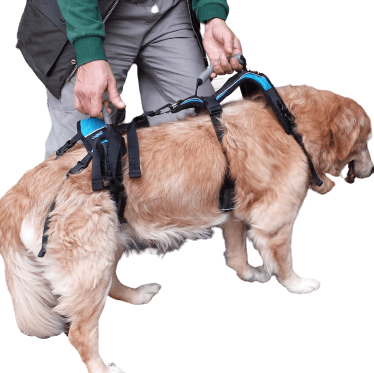
Why maintaining a healthy body weight is so important for your pet in helping with Osteoarthritis.
And it is not just dogs that are likely to suffer, the condition is indiscriminate and can affect both cats and dogs at any age, breed or size. But before you file this news in the “sad things I can do nothing about” folder, be aware that there are things we can do that will reduce the risk of your beloved pet suffering the condition and also greatly reduce the pain associated with the condition.
Firstly it important to know more about the condition to be able to do something about it – so let’s get our learning hats on!
What is Osteoarthritis?
Osteoarthritis (arthritis or degenerative joint disease) affects the joints. In normal joints, a firm but smooth substance, known as cartilage, covers the ends of bones inside the joint. This cartilage provides a smooth surface of joint gliding motion and acts as a cushion between the bone ends. In OA, degeneration to the joint causes the cartilage layer to break down, leading to pain, swelling and joint movement problems. As it worsens with time, little spurs of bone may develop. Bone or cartilage may chip off into the joint. The body also creates an inflammatory process inside the joint. Enzymes and proteins (cytokines) cause further damage to the cartilage and bone surfaces inside the joint. As the cartilage wears away, the bone rubs against bone leading to more joint damage, pain and limits movement.
How can I tell if my pet is suffering from Osteoarthritis?
Of course we all expect our pets to get less active and stiff as they age but we need to be aware of the warning signs that could indicate discomfort or pain. These include limping, lameness, stiffness when getting up and becoming appreciably less active and slower moving. It’s important to remember that dogs and cats don’t cry- so we need to look for subtle changes in their behaviour or activity to guide us. If you are unsure, ask your veterinary surgeon. Most studies into OA look at the lameness of a pet both subjectively (from the owner and/or vet’s opinion) and objectively, using specific measurements (like force through each leg when walking).
What can I do to prevent my pet from suffering from Osteoarthritis?
The good news is that the research is very clear and provides us with a resounding message, and the most important nugget for you to take away from this article:
Restricting the weight of our pets will not only reduce the onset of the condition, but it will also reduce the suffering of those pets already affected.
Prevention is better than cure
The best evidence that keeping your pet from becoming overweight will delay the onset of osteoarthritis comes from a life span study which looked at Labradors from puppies until their senior years1. Known for their insatiable appetites and risk of arthritis, this was a key group of dogs to study. One group of Labradors were fed ad lib, which means that the dogs were fed whatever they wanted until 3 years old, when they were then placed on a diet with maintenance calories. They were compared to a second group, who had restricted calories (a set/ measured amount of food) from when they were puppies. The study found that the Labradors who had a restricted diet lived longer, had less arthritis at age 8 years and they were also older when they first received any treatment for arthritis. This means that for long term health benefits, pets should be fed a calorie controlled diet and not just fed as much as they want.
Reducing the pain experienced by those pets already affected
Research has also shown that even a small decrease in weight can reduce lameness (pain or discomfort) in dogs with osteoarthritis. A 10% weight loss in dogs with hip osteoarthritis (secondary to hip dysplasia) was found to have vast improvement in their lameness2. Another study focused on hips and elbows, and lameness improved with a 6.1% weight loss when trotting and 8.85% weight loss with walking 3.
In other words, overweight pets will suffer more from osteoarthritis, and we can reduce their suffering through weight control. So here’s important nugget number 2:
Weight loss in overweight cats and dogs is now seen as one of the most important factors in helping pets with OA to improve lameness, decrease pain and increase joint mobility.
On the downside, reducing body weight can be challenging in arthritic pets, as any discomfort may lead them to do even less exercise, which can add to weight gain (known as the osteoarthritis cycle – see image).
How do I know if my pet is overweight?
You many notice some changes: The ribs can’t easily be felt without some pressure; loss of an obvious waist; a belly which wobbles when walking or running. You may also have noticed that your pet is inactive most of the time and may be obsessed with food.
Utilising one of the ‘Body condition Score’ charts (available for both cats and dogs) is much more helpful than considering kilograms against a breed average when determining if a pet is overweight.
So maybe my pet does need to lose a few kilograms…..What now?
Even if your pet has not been diagnosed with osteoarthritis, keeping them at or getting them to a healthy weight will benefit them later in their senior years.
At Paws in Motion, we calculate your pet’s calorie requirements and then determine recommended quantity depending on whatever kibble, home prepared foods, veterinary diets, snacks, or treats you are currently feeding, and consider your pets needs under the direction of your veterinarian. We use weight as a guide for weight loss, but we focus on ‘Body Condition Score’ as this allows us to use observation and palpation (touch) to better assess your pet’s condition. We also record girth measurements and take photographs to help us monitor their progress. Then we work on a diet and exercise plan especially targeted for your pet.
If you are interested in discussing weight loss and your dog or cat, then please contact us.
References:
- Kealy RD, Lawler DF, Ballam JM, Mantz SL, Biery DN, Greeley EH, Lust G, Segre M, Smith GK & Stowe HD, 2002, ‘Effects of diet restriction on life span and age-related changes in dogs’, JAVMA, vol. 220, no. 1, pp. 1315-1320
- Impellizeri JA, Tetrick MA & Muir P, 2000, ‘Effect of weight reduction on clinical signs of lameness in dogs with hip osteoarthritis’, JAVMA, vol. 216, no. 7, pp. 1089-1091
- Marshall WG, Hazewinkel HAW, Mullen D, De Meyer G, Baert K & Carmichael S, 2010, ‘The effect of weight loss on lameness in obese dogs with osteoarthritis’, Vet Res Commun, vol. 34, pp. 241-253
Amber's story: We first met Amber when she was 7 months old, already diagnosed with hip dysplasia. Amber does not have any hip arthritis yet, but she was already painful because of the joint laxity or looseness. We needed to build up specific muscles to support the hip joint, as well as change her food obsession to regain some control over her puppy weight. Both these things are fundamental in delaying any OA. Several months later and Amber is a lean puppy-playing machine, with well-developed hip muscles and a consistent diet to maintain her weight as she continues into adulthood.
相關產品
This site is protected by reCAPTCHA and the Google Privacy Policy and Terms of Service apply.











